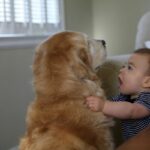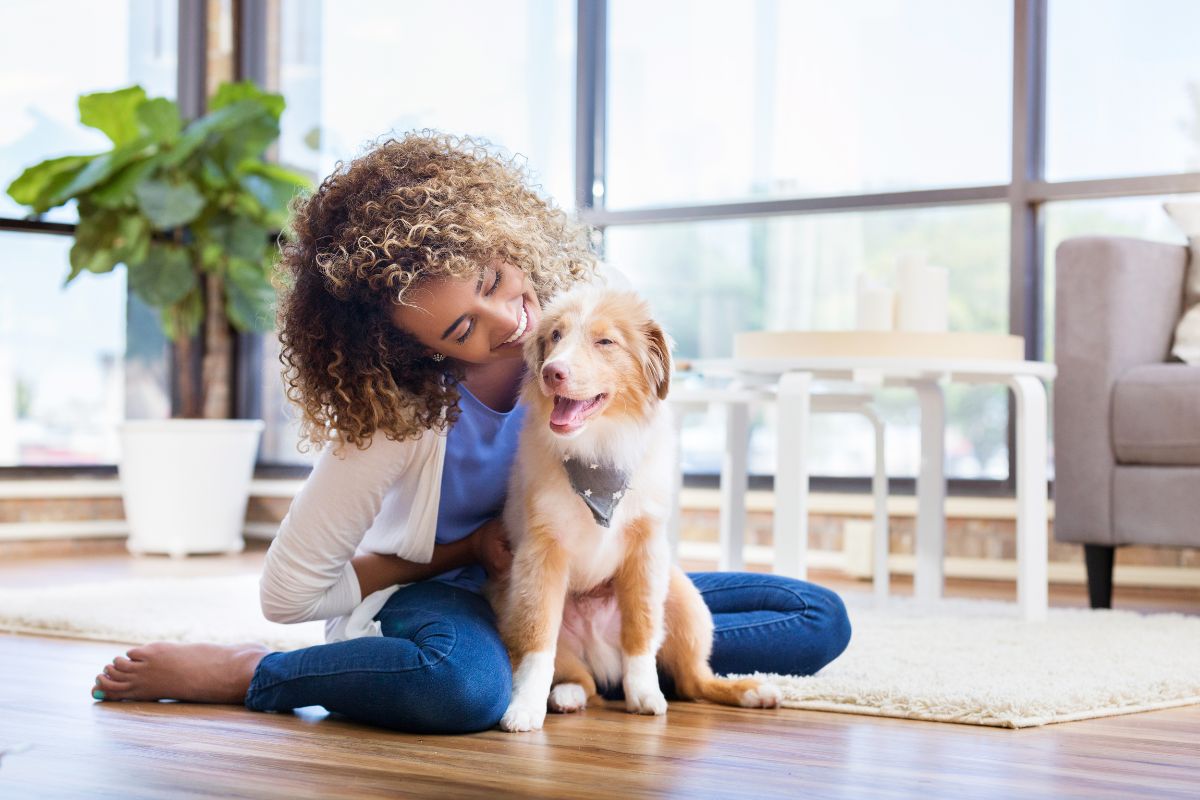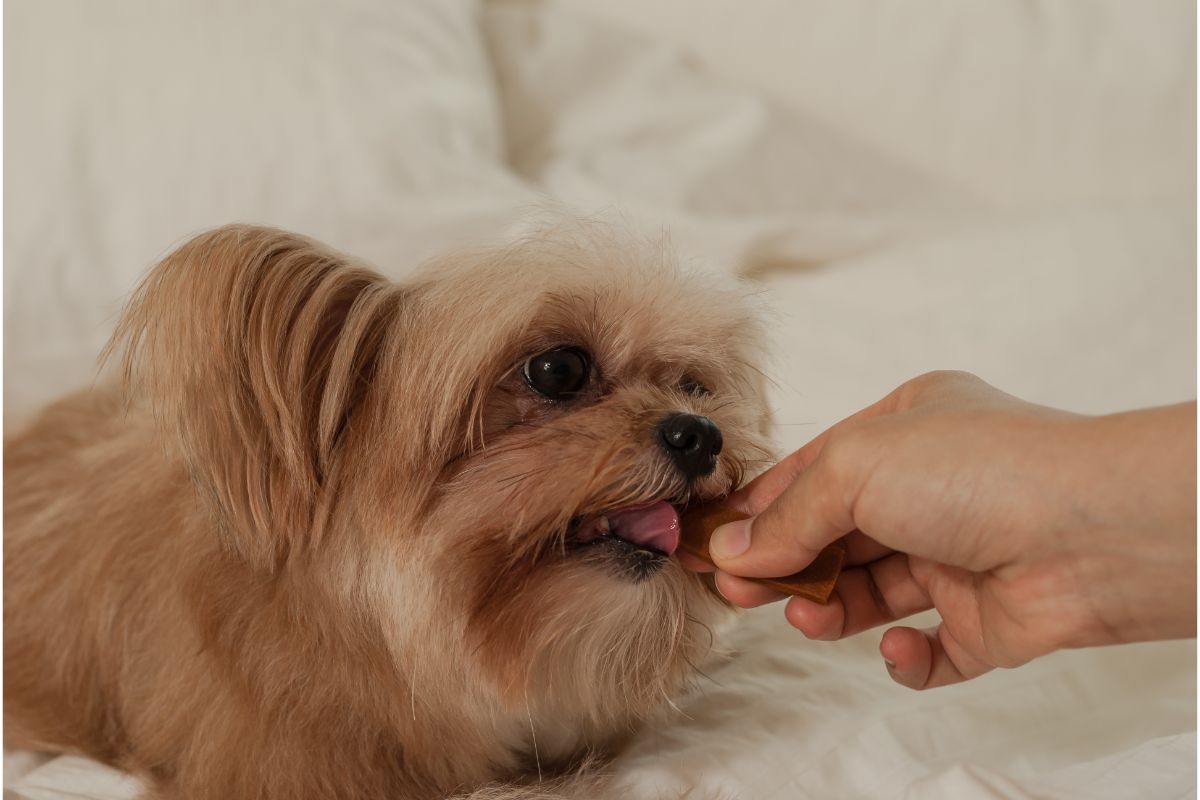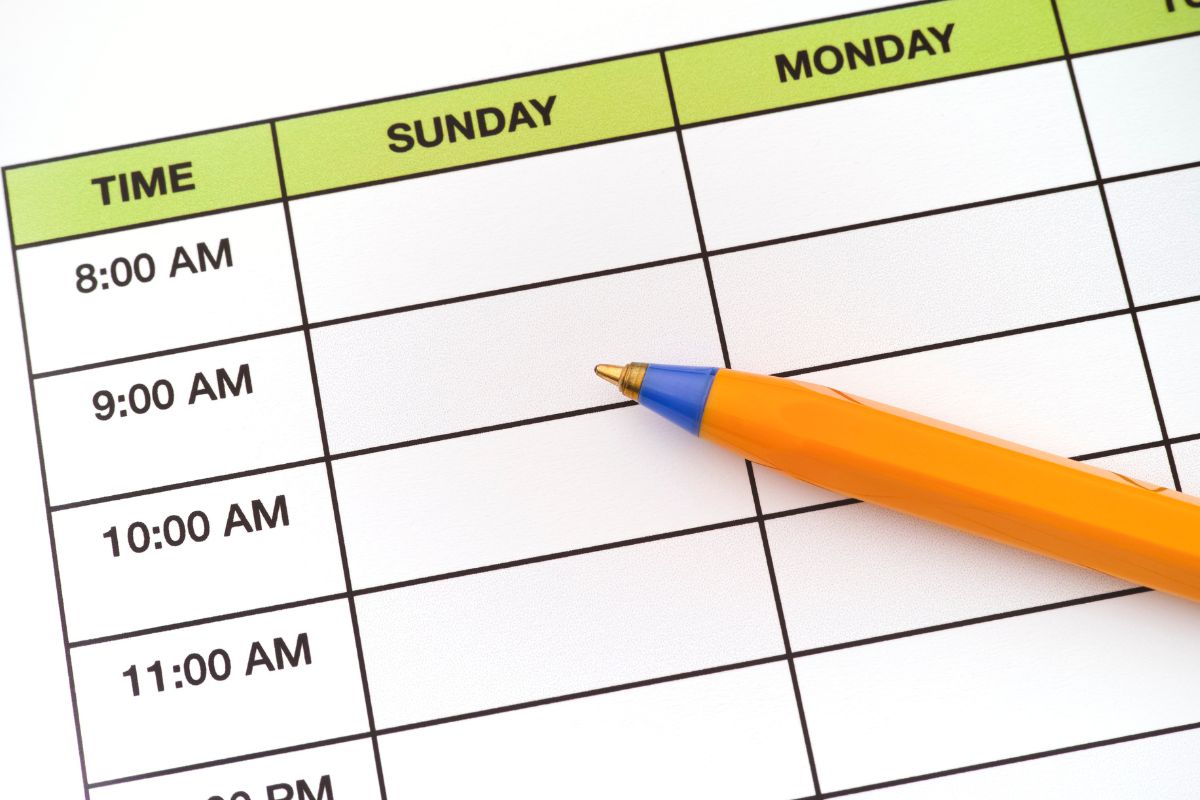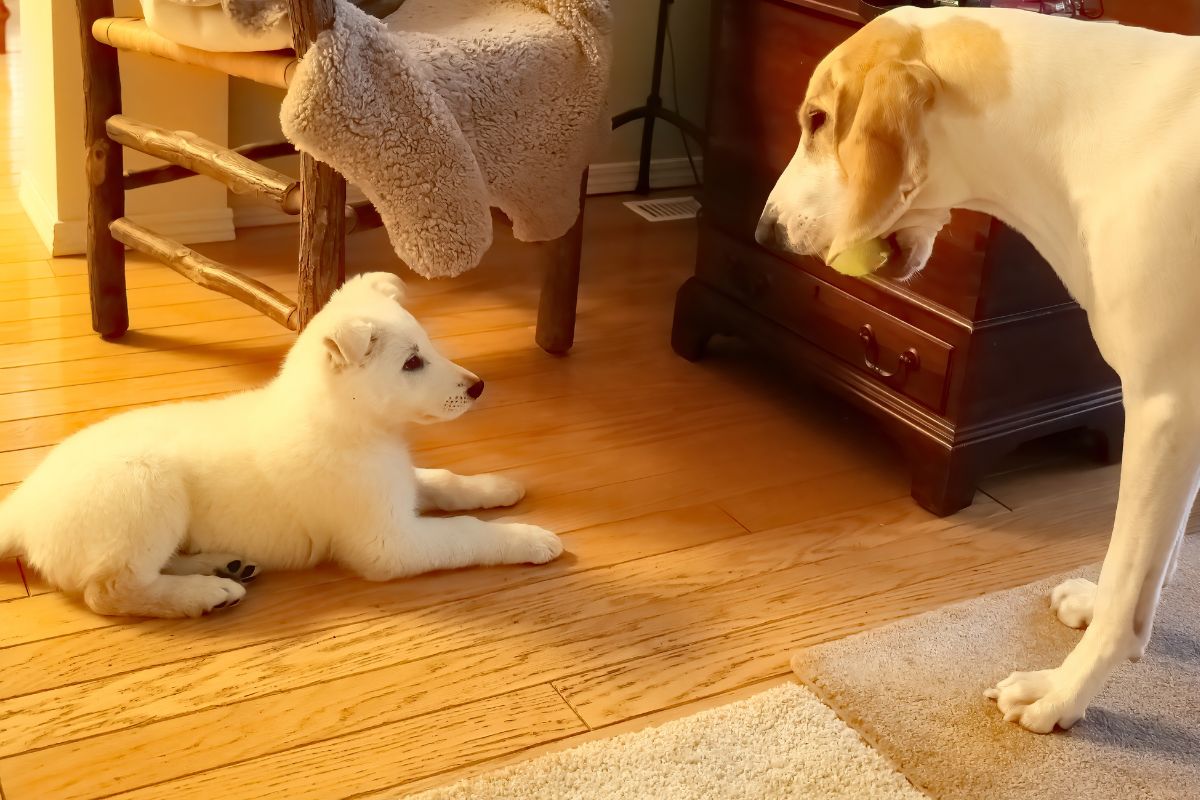When it comes to our furry companions, there’s always more to learn about their quirky behaviors.
One such delightful habit that dogs often exhibit is rolling onto their backs and wiggling with pure enthusiasm. But what’s the story behind this super cute gesture?
In this article, we’ll take a closer look at this adorable canine conduct, shedding light on the ‘why’ that many of us ponder.
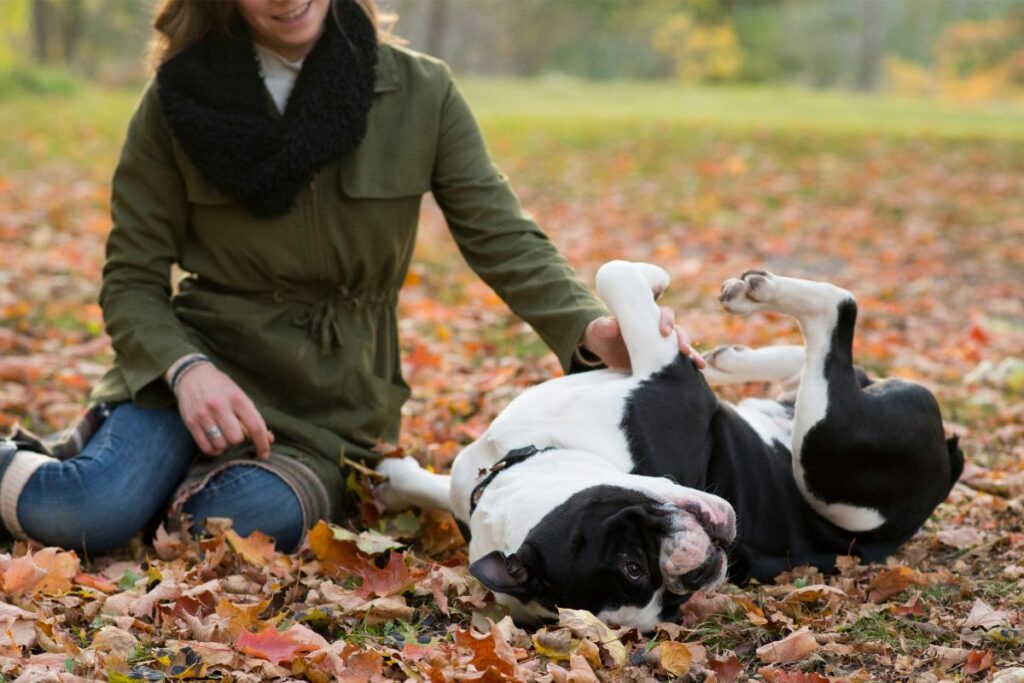
We’ll demystify the reasons our four-legged friends engage in this playful behavior and what it means for our relationships with them.
Get ready to unravel the secrets of your dog’s wagging and wiggling world!
Ways To Wiggle
There are a few different reasons why a dog might roll on their back and wiggle, but the biggest thing to know is that it’s not just random silliness; dogs have various reasons for these playful actions.
One common scenario is during playtime – your dog may flop onto their back to invite your or their fellow canine pals to join in the fun, a gesture that says, “Let’s play!”
On the flip side, if your dog has encountered an unfamiliar scent, they might roll on it to mark it with their own scent, a behavior rooted in their territorial instincts.
It could also be as simple as your dog having an itch on their back that they can’t reach with their hind legs or mouth.
Additionally, that happy wiggle and roll you see when you return home? It’s a joyful greeting, expressing their excitement to see you. Understanding these behaviors helps strengthen the bond between you and your four-legged companion.
Telling The Difference Between The Wiggles
Telling the different ways our canine companions communicate is a fascinating endeavor. Understanding these physical cues can help you discern exactly what your dog is trying to tell you.
When your furry friend rolls onto their back and wiggles, they’re often converting a sense of vulnerability, trust, or playfulness.
This body language signifies an invitation for belly rubs and shows a strong bond between you both.
As well as this, a relaxed tail wag can indicate happiness, while a tucked tail might signal fear or submission. Paying attention to their ears, eyes, and posture can reveal even more about their emotions.
Ears pinned back or showing teeth could indicate that your dog is in pain or otherwise uncomfortable, in which case be very careful, keep your distance, and see if they’re able to calm themselves down or if you need to consult a vet.
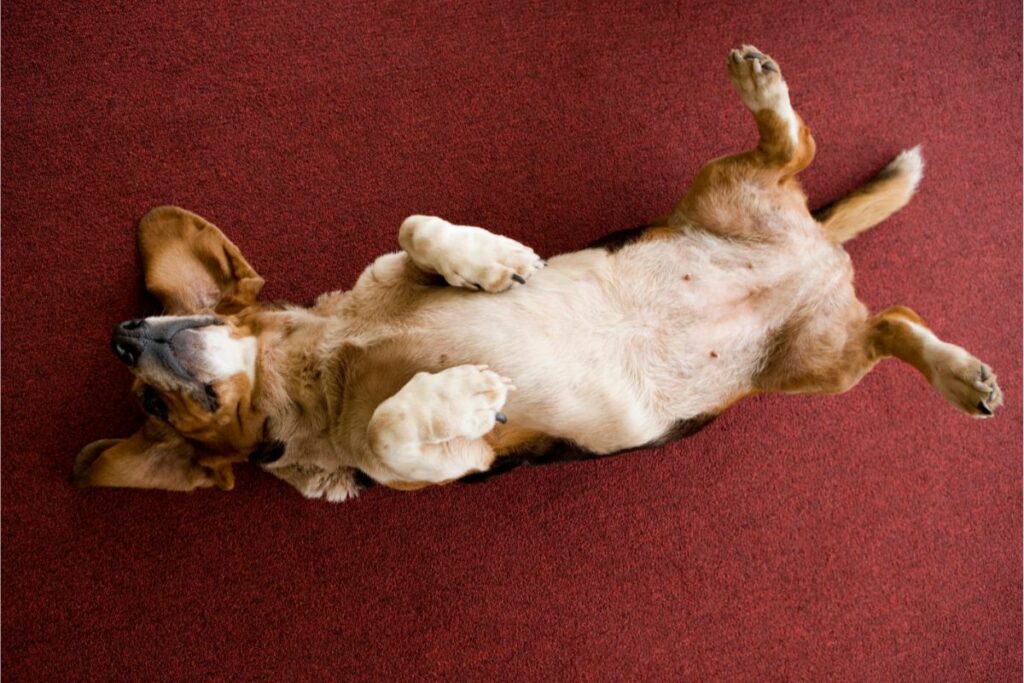
Safety Precautions
When your furry friend starts rolling on their back and wiggling, it can be a delightful sight. However, ensuring their safety during this playful behavior is crucial.
First, make sure the environment is dog-friendly and free from sharp objects or other potential hazards.
Keep a watchful eye, as unusual wiggles could indicate discomfort or distress.
If your dog suddenly freezes, yelps, or seems unwell during these antics, it’s time to step in and assess the situation.
Sometimes, it’s just a harmless itch or a playful moment, but if you’re unsure, don’t hesitate to contact your vet.
Prioritizing safety will keep your pup’s wiggles worry-free.
Tips For Dog Owners
As dog owners, understanding why our furry companions roll on their backs and wiggle is essential for fostering a happy, healthy relationship with our pups.
When you spot your dog engaging in this adorable behavior, it’s often an invitation for belly rubs and affection, so don’t hesitate to indulge them!
Use this sign of trust to give your dog some gentle pets and scratches.
Additionally, the wiggles can serve as a stress reliever for your dog, so recognizing when they need a little relaxation time is equally important.
Being attuned to your dog’s cues and responding with love and care will only enhance the joy of dog ownership.
Final Thoughts
Let’s wrap up our exploration of why dogs roll on their backs and wiggle now that we understand more about their quirky behavior.
We’ve learned that this movement is a multi-purpose language used to communicate submission, invite play, and even scratch an itch.
Understanding these canine acrobatics not only strengthens the bond between you and your furry companion but also keeps them happy and comfortable.
Remember, the next time you see your dog engaging in this delightful display, you’re not just witnessing a cute gesture – you’re witnessing a form of communication that bridges our world. So, keep observing, keep playing, and keep celebrating this delightful dance.
Frequently Asked Questions
Are dogs happy when they roll on their backs?
Almost always, the answer is yes! The behavior is communicating that your dog is happy and trusts you – they either want affection or to play, probably both.
There are alternative reasons for dogs rolling on their backs, such as to scratch an itch or cover their scent. Keep an eye on your dog’s signals and body language to know for sure.
Do dogs enjoy belly rubs?
There are a lot of dogs who love to have their bellies rubbed, and rolling on their backs could be a way for them to signal to you that this is the kind of affection that they want.
However, not all dogs are the same, and some dogs might not appreciate having their bellies touched.
That doesn’t necessarily mean that they don’t trust you, just that this isn’t somewhere they want to be pet.
Should I let my dog roll in the grass?
So long as your dog isn’t in danger of hurting themselves or getting overly dirty (for example, rolling in another dog’s excrement or mud), then there are no reasons to prevent your dog from rolling around in the grass.
They probably enjoy the sensation and the scents of wiggling in the grass; just make sure that they haven’t rolled in anything gross before you take them home.
- Your Complete Guide On How To Train A German Shepherd - November 1, 2023
- Understanding Doggies: Why Do Dogs Roll On Their Back And Wiggle? - October 31, 2023
- A Pawprint Pets Guide To Puppy Breeds – Bernese Mountain Dogs - October 30, 2023





